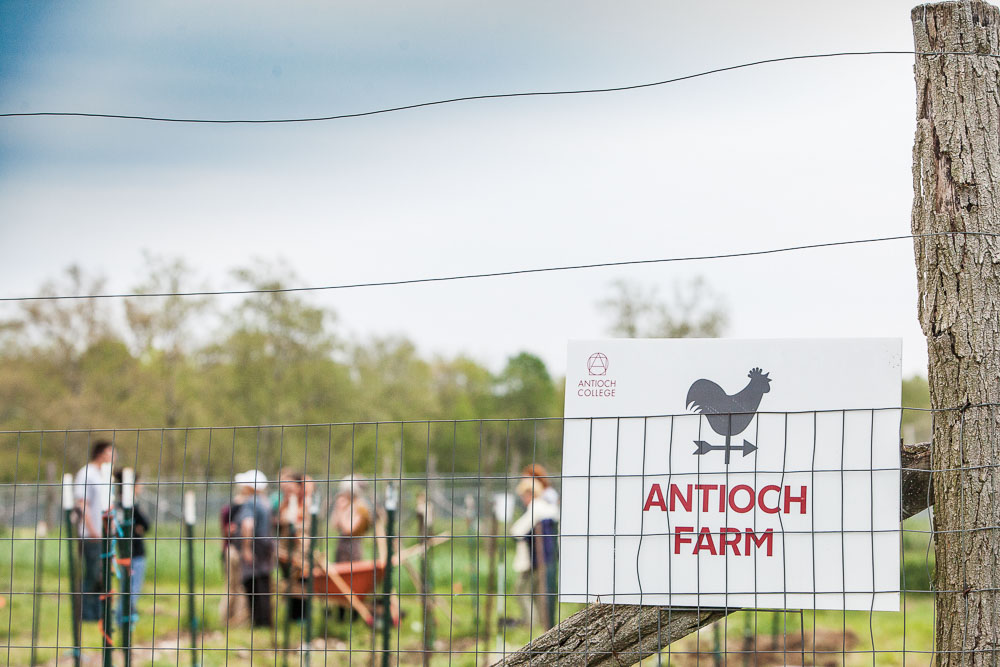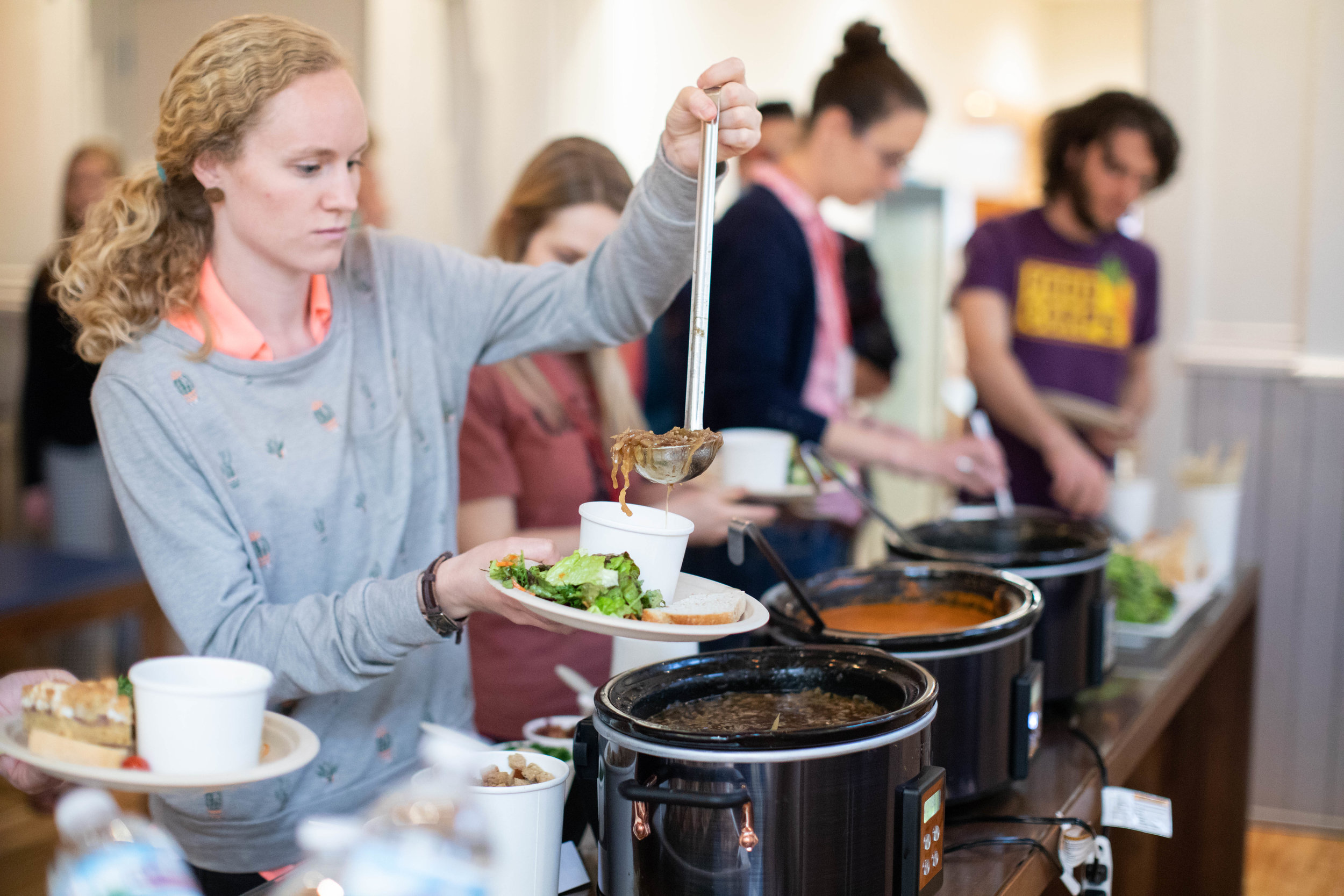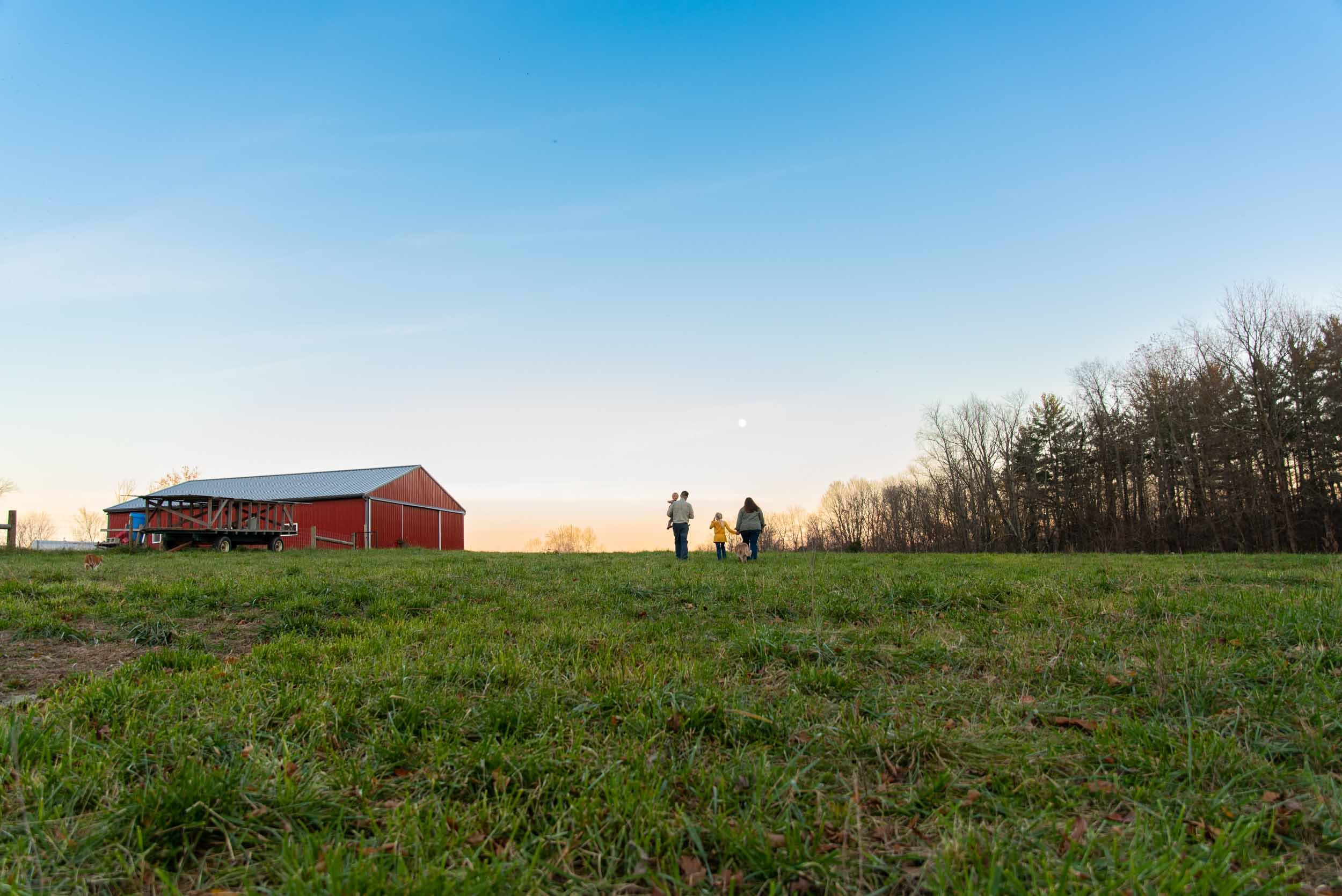Essay: Connecting Rural Farming + Urban Consumption

Editor’s Note: Sydney Sauer, a May graduate of Cincinnati Hills Christian Academy, wrote this article after she attended CHCA’s Food Symposium in April.
Traveling down Interstate 75, I rest my head on the window and watch amber waves of grain roll past for what seems like an eternity. All of a sudden, just as my eyes are starting to glaze over, the road curves and reveals a stark change of scenery: skyscrapers.
To anyone else, the eerily sudden transition between the sea of agriculture and the concrete jungle might sound like something out of a poorly edited movie, but for us Midwesterners, it’s simply a way of life. We notice the elementary school concepts of rural, suburban, and urban, but as the landscape switches between these three extremes at the drop of a hat, we think nothing of it.
Numb to the uniqueness of this coexistence, many of us have never stopped to think about how it could—and should—affect our food system. Surrounded by agriculture, why do we still eat food that has travelled an average of 1,600 miles across the country to reach our plates? One crucial link between cultivators and consumers is missing: accessibility. The Ohio Valley provides a vast landscape of plenty, an intermarriage of farmland and asphalt unique to the region, yet only the wealthiest people can afford to reap the harvest.
Farmer’s markets, farm-to-table restaurants, and community supported agriculture programs (CSAs) exist, but they almost exclusively occupy wealthy suburban neighborhoods, abandoning low income communities in the same region to fill their shopping carts with frozen foods and microwaveable meals. To unlock its potential as a national leader in the sustainable food revolution, the Midwest needs to acknowledge the unique blend of rural and urban that characterizes the region and embrace its aptitude for farm-to-table cuisine. But unless we knock down the barriers of price, education, and location that make it impossible for the lower-income community to join in, the vast majority of the population will never get a taste of the revolution.
Farm-to-Table: It’s In Our Roots
Ironically, eating local was something that the Midwest used to excel at; “farm-to-table” has become an industry term word only recently, but our grandparents practiced the concept every day as they plucked their own chickens for dinner and baked bread using locally milled flour. Since then, an increase in technology and a decrease in the price of factory foods has led most people to eat out of boxes and bags rather than from a local grower, even though the average Ohioan’s proximity and access to farmland has remained relatively unchanged. In place of the hand-plucked chickens of our grandparents’ generation, our children eat boneless skinless chicken breasts, and rather than baking bread, we toss an artificially enriched loaf of white bread into the grocery cart.
This dramatic shift from farm to factory has caused some leaders to decide that enough is enough. Just a few months ago, Cincinnati Hills Christian Academy’s Food Symposium gathered many of these sustainable leaders in the food industry, including Todd Hudson, one of Cincinnati’s preeminent farm-to-table restaurateurs. In 2007, before most people had even heard of farm-to-table food, Hudson quit his day job to become the owner and operator of Wildflower Cafe in Mason, OH, a suburb just outside of Cincinnati. In Hudson’s eyes, locally sourced food is the only way to maximize the quality of what ends up on his customers’ plates. “This really is kind of a farming area, particularly the more north we go,” he told audiences at the Food Symposium. “I’m on the cusp. I mean, you can drive one mile from the restaurant and you’re at a farm.”
Urban Marginalization, One Meal at a Time
With 26 million acres of farmland throughout the state, most Ohioans live in close proximity to agriculture, whether it’s a small family farm or a large corporate grower. But at the same time, a restaurant like Hudson’s is quite rare. And when a farm-to-table venture does open its doors, it’s often set up like the Wildflower Cafe, a sit-down restaurant situated in the depths of the suburbs, nestled between Homearama estates and hot yoga studios. Even with their limited reach, such restaurants play a role in the local food ecosystem—they create space to advance sustainability, help consumers vote with their dollars, and fund local farmers. Most people would acknowledge that chefs like Hudson deserve recognition and success for their ambitious, risky ventures into preparing food the ethical way. And as Hudson himself explains it, the cost of his food is not inflated; fresh, local ingredients do cost more than the frozen, corn-based foods served at other restaurants, making a higher price tag a necessity.
Although these suburban, upper-class ventures are good for the local food movement as a whole, it’s no secret that the location and cost of farm-to-table style restaurants create a barrier for lower-class involvement. Where are these crucial spaces in the urban community? Benita Munnerlyn, a collegiate entrepreneur catering to Cincinnati’s urban vegan audience, argues that the lack of local options in the urban community in no way springs from lack of demand. “You would be really shocked and surprised to learn how much people in general are really trending toward vegan, as well as in urban societies where the demographic is more African-American,” she explains. “Overall, people want to be healthier and people want to eat healthy.”
It’s hard to disagree with Munnerlyn as she passionately advocates for healthy, local alternatives to the fast food and freezer meals that represent the dietary hallmarks of urban food deserts. While it seems impossible that she experiences such difficulty finding sustainable food just 20 minutes from Hudson’s suburban farm-to-table haven, the struggles of low-income urban populations in the sustainable food space are well-documented and devastating. It’s hard enough for the impoverished even to have access to a grocery store—low-income communities house only half as many grocery stores as wealthy areas, while containing 30% more convenience stores—let alone eat local, fresh food. Most people realize the extent of this problem in the poorest communities, where government food programs like SNAP and WIC control citizens’ diets more than anything else. In Indiana, for example, only 0.006% of food stamps are redeemed at farmers’ markets.
But what most people do not realize is that this issue also extends well into the middle class. In Cincinnati, the estimated minimum cost of feeding one person for a year is around $3,000. For a family of five making the average middle-class salary of $45,000 before taxes, the cost of food represents over a third of their budget. To make matters worse, this estimate is just a minimum; it does not take into account anything organic or farm-fresh, items which normally cost around 20% higher than their nonlocal counterparts. From unemployed single parents receiving government aid to middle-class families making a decent wage, eating a diet replete with locally grown food is a financially unrealistic expectation for most people living in the Ohio valley. In other words, whether marginalized people want to change their eating habits or not, the choice has already been made for them.
The Midwest’s Missing Link
The underlying issue in our region that causes this problem, some may say, is the disjointedness of the Ohio Valley food culture, where the link that should connect urban hunger to rural harvest has yet to be forged. Each year, food nonprofit Strolling of the Heifers compiles dozens of factors, including census data, school lunch information, and CSA participation rates, to determine which states are the best at eating local. Ohio, Kentucky, and Indiana have been consistently ranked in the bottom half of the country, staying stagnant in the lower thirties, while coastal states like Vermont and Maine always take the top spots. The difference between these coastal powerhouses and the Midwest is staggering. Ohio has only two CSAs per 100,000 people, compared to Vermont’s whopping 24. The food discrepancy also directly impacts the youth, with only 27% of Ohio’s schools and 31% of Indiana’s schools including local food in their cafeteria lunches while 90% of Rhode Island’s students enjoy farm-fresh options. Even the government plays a role, spending $0.18 on USDA Local Food Grants per capita in Ohio and $1.20 per capita in Maine.
What is the Midwest missing? Certainly not agriculture. Instead, the issue lies in distribution. The links between rural and urban—farmer’s markets, farm-to-table restaurants, community supported agriculture—are beginning to form, but many of their costs are still too high for the majority of consumers to justify. And while education may help lower-income communities understand the importance of being willing to spend the extra dollar on locally sourced produce, that does not change the fact that some people cannot afford to eat local whether they see the value in it or not. That’s why everyone who can afford it now has a responsibility to act on that purchasing power; more customers means more demand, which will make prices more accessible. There is a direct, simple connection between farms and food—people.
Simran Sethi, author of the award-winning book Bread, Wine and Chocolate, summarizes this profound connection in one breath. “Our cultivation of our land and its creatures—plants, animals, fungi, and bacteria—are essential to culture,” she claims. “This is who we are.” Here in the Ohio Valley, our culture is both rural and urban. It is amber waves of grain, but it is also endless rows of office buildings. So if cultivation and culture do go hand-in-hand, like Sethi suggests, the Midwest must make a choice: intertwine rural production with urban consumption in a way that is accessible to all, or risk losing what makes our region exceptional.
Sydney Sauer is a student and a writer from Cincinnati with a passion for environmental sustainability. She has served on the Hamilton County Recycling Policy Committee, attended Al Gore’s Climate Reality Training, and had her environmental writing published by Vox Media. Next fall, she will attend The Ohio State University with a major in computer science.





